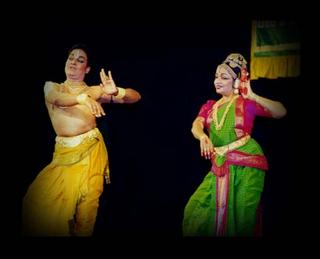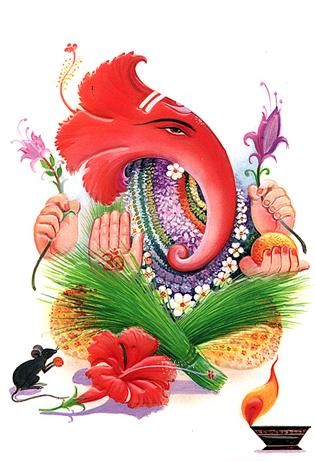Kuchipudi - Road to Revival

Mayuri Mukherjee speaks to world-renowned Kuchipudi maestro Raja Reddy on his contribution in reviving this genre of dance and more.
World renowned Kuchipudi dance maestro, Raja Reddy is known not just for extraordinary dance skills but also because he, along with his family, is the torch-bearer of this great art form which even a few years back was a dying tradition restricted to Andhra Pradesh. The maestro was recently in town to conduct a workshop for the first time in Kolkata. Here are the excerpts:
Tell us about this workshop.
Previously, I had received offers to conduct workshops in Kolkata but since I was very busy with my performances they did not materialise. Eastern Zone Cultural Centre (EZCC) called up persistently for quite some time, so finally I had to agree to do this workshop. Also, I like Kolkata, and been here for my performances before. I had seen the people here are very culturally advanced. The people from EZCC were very polite and made sure we had a comfortable stay. After a long hard day when you retire you want a good night’s sleep. Before coming here, I was not too sure of the students and whether they would be able to learn. But on the first day itself when I saw them perform, all my worries disappeared - they were brilliant. This workshop has truly been wonderful in all aspects.
What has been your contribution to Kuchipudi dance?
My family and I have been solely responsible for bringing Kuchipudi dance onto the cultural map of the world. In earlier times we had many wonderful dancers, like my guru and his brother - they were great masters but only performed in Andhra Pradesh, so people outside the state barely knew about this dance form. I decided to do something about it and performed in Delhi where I showed the audience the variety in Kuchipudi - the nritya, nritta and natya, the tandav and lashya. People were surprised to see Kuchipudi in this new avatar. Karan Singh and Indrani Rehman requested me to stay back in Delhi and promised to help out in every way possible. I was very young then, but they said that I was a good dancer. Also I was performing with my wife, so with tandava and lashya it was a complete dance. We stayed back in Delhi to popularise the dance. We also were invited to many international dance festivals like the ASTA convention which was hosted by the President of the USA and he even asked us to perform on a float. What an experience that was! It was a privilege to perform there. Besides, we have dance institutes in Delhi and Gurgaon where Kuchipudi is taught. I received offers to start a dance school in the States, but it is not possible for me to have one foot in India and the other one in America - I want to live here in India and teach Kuchipudi.

Your whole family is into Kuchipudi dance, how do you feel about that?
I think we are the only family where you will find all the members are into dancing, my wives and daughters are dancers too. Otherwise, we see only the male members of the family join the profession. Like in Kuchipudi dance, for a very long time only Brahmin boys were allowed to learn the dance form. So I feel very good that my whole family is into dance. I am especially proud of my daughters who have both chosen it themselves. My children have also learnt western music and dance. I want them to know the world but without forgetting their roots.
Is there a difference in the way you teach dance to your students and the way you learnt it from your guru?
Yes, there are some differences. Though my ‘guruji’ was a very knowledgeable man, yet his presentation was slightly rustic - it lacked sophistication and finesse. So, after I learnt choreography from Delhi, I tried to systemise the onstage performances, like how to start the programme and arrange it in a particular order. Also how to make use of the large stage-space and sound effects. Some critics even questioned the changes I made, but later on they agreed with me. Even my guruji helped me in making these changes. He was quite open to change and believed that not only should a shishya learn from the guru, the guru must also learn from the shishya.
What does dance mean to you?
Dance is my life - its my breath, my happiness. It’s a divine art. When I dance, not just my whole body but even my inner “atma” (soul) feels elated. It has been scientifically proven that dance is the best exercise for our body. I relax through dance. My daughters always complain that I don’t spend enough time with them and once when they overheard me telling a reporter during an interview that I relax with them on Sundays, they told me, “You lie so much to the media, which Sunday did you ever spend with us?” (laughs )
What is the most important quality for a dancer?
Sadhna or devotion, and to some extent also a good sense of rhythm.
For the audience to like a dancer on stage, is it necessary for the performer to have a good figure and pretty face?
Well, if a performer doesn’t have a good body, then maybe the initial few minutes, he or she may seem a bit awkward, but after that it is how the person performs that ultimately counts.
Your favourite dancer?
Well, I liked Uday Shankar. When I saw him perform I was mesmerised. I also liked Bala Saraswati - she is great.
Your source of inspiration?
Uday Shankar. In Hyderabad, I saw him perform for the first time. And you know, at that time people used to tell me things like ‘men don’t dance’. But they were ignorant people and didn’t know that dance itself was created by Lord Shiva! After I saw Uday Shankar I decided to dance like him…
How did you begin dancing?
During my childhood, I used to travel with these traditional dance groups without the knowledge of my parents - this was when I was about eight or nine years old. I started taking formal lessons in dance only during my graduation.
Besides Kuchipudi, what are the other dance forms that interest you?
I’ve learnt the Bharatnatyam and Kathak. I also know about Mohiniattam and Manipuri, though I didn’t learn them. Radha learnt a bit of Odissi - but this is mostly to understand the similarities and dissimilarities between these various dance forms.
Can we hope to see you in Kolkata, for another dance workshop?
Yes, definitely.
The writer is a Coordinator, ex-La Martiniere for Girls
Courtesy: The Statesman



1 Comments:
zhengjx20160525
michael kors outlet
nike air force 1 white
louis vuitton outlet
marc jacobs outlet
louis vuitton handbags
ralph lauren outlet
toms outlet
true religion outlet
coach outlet store online clearances
kate spade outlet
jordan 6s
oakley sunglasses
coach factory outlet online
ralph lauren polo
concord 11
longchamp le pliage
louis vuitton outlet
tory burch boots
michael kors handbags
north face jackets
timberlands
cheap toms shoes
true religion jeans
ralph lauren sale
tods sale
nike blazers shoes
gucci outlet online
coach factory outlet
kate spade handbags
michael kors outlet clearance
coach factory outlet
nike air huarache
christian louboutin sale
ghd hair straighteners
coach outlet
jordan 11
michael kors outlet clearance
concords 11
nike uk
adidas running shoes
Post a Comment
<< Home